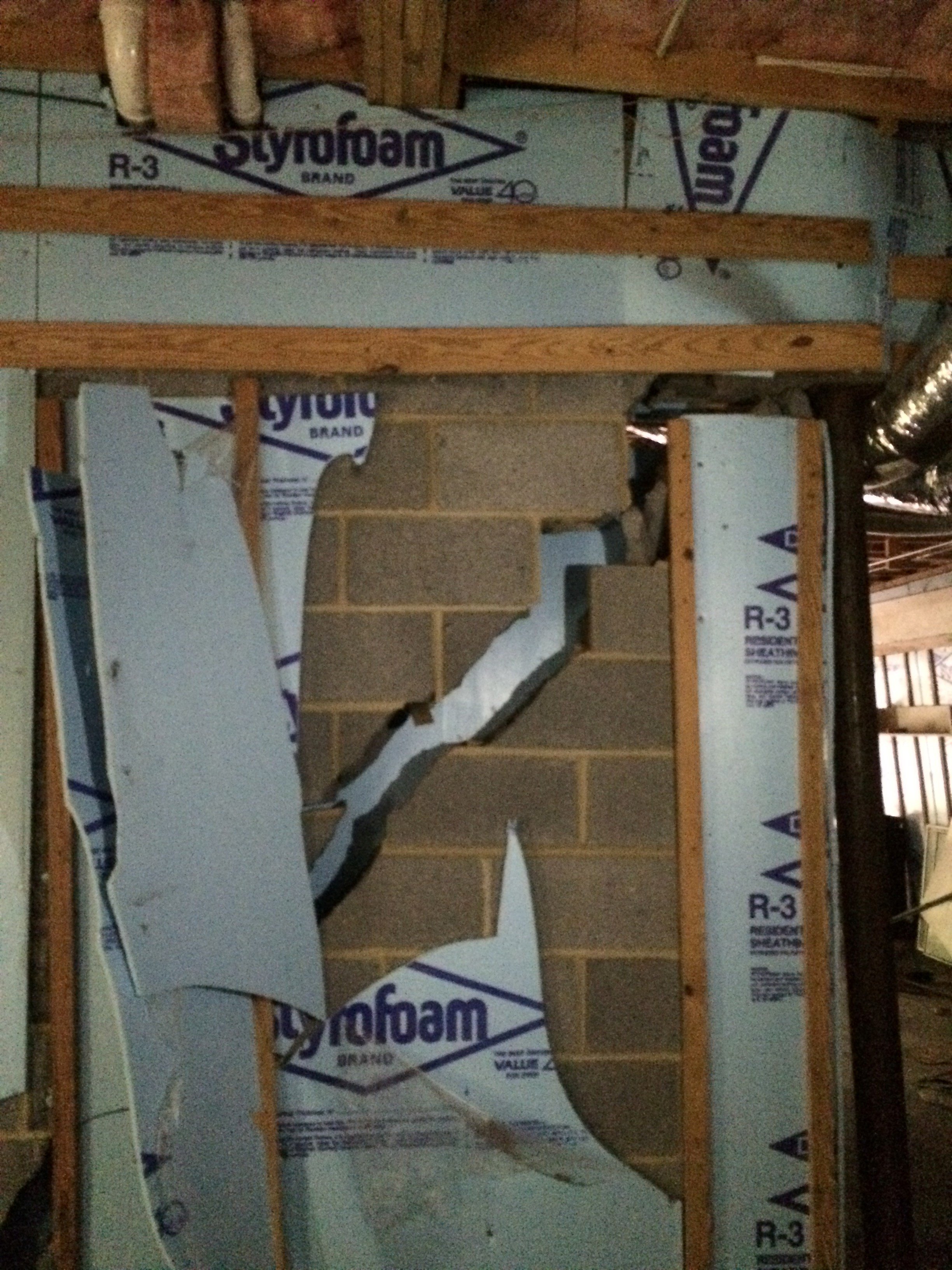The
Structure:
The foundation of this mountain residence in beautiful Boone North Carolina was built using typical CMU (concrete masonry unit) walls that appeared to be ungrouted and unreinforced. These certain factors can cause a number of structural problems to arise down the road.
The
Topography:
When building in the mountains where most houses are on some sort of a slope, it is nearly impossible to avoid having fill material against the up-hill side of the residence. However, in doing so one must not underestimate how powerful lateral earth pressure can be. Not only must builders keep their building techniques in close check, but also must pay close attention to the kind of fill material being put against the house.
The
Problem:
The purpose of a shear wall is to help support the load exerted on the uphill wall from the weight of the fill material, however when these walls are built incorrectly an extreme amount of force is applied to the uphill wall. In this case the shear wall has failed and the uphill wall is bowing in, causing the entire residence to tilt down hill.


Lesson Learned:
“Don’t be square put some rebar in there”
– Unfortunately this particular residence is too far-gone in order to be salvaged. As you can see in the picture above (failed shear wall) the combination of poor construction and heavy lateral earth pressure can have serious consequences. The foundation of this house was extremely under designed for the amount of force the fill material would have against it. Large openings in shear walls close to the uphill side causes the shear wall to become weak under extreme loads. We also recognized signs of mold and severe water infiltration on the uphill side of the residence, which led us to believe that there was an absence of a water proofing membrane on the outside face of the CMU foundation wall. The implementation of gravel between the foundation wall and the fill material is a must in order to properly drain ground water away from the wall and into a collection drain resting on top of the footer. We believe that clayish fill material, which is susceptible to settlement, was put directly against the foundation with out the use of gravel further adding to the long list of problems.